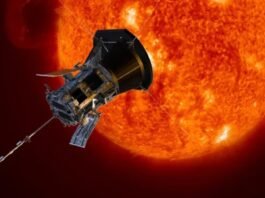The Complexities of Gamma Rays
Researchers recognized two important types of gamma rays: terrestrial gamma-ray flashes (TGFs), that are temporary however intense bursts, and gamma-ray glows, that are dimmer but longer-lasting emissions. The ER-2’s information additionally launched a brand new class: flickering gamma-ray flashes, which current a center floor in brightness and period.
David Smith, a physicist on the University of California, Santa Cruz, expressed his astonishment at these findings, calling them probably the most important on this area for over a decade.
A Bird’s Eye View of Storm Activity
The ER-2 ascended to roughly 20 kms (12.4 miles) throughout its mission. This allowed it to look at the thunderstorms’ gamma-ray exercise from a novel vantage level. As the plane is supplied to transmit information in real-time, the plane might revisit areas the place gamma-ray exercise was excessive. This result in a extra complete understanding.
The researchers found that gamma-ray glows might persist for hours and canopy huge areas, measuring hundreds of sq. kms. Notably, these glows have been discovered to fluctuate in depth over seconds, difficult earlier assumptions about their stability.
New Discoveries and Implications
The research additionally revealed quite a few TGFs that have been too faint for satellite tv for pc detection, suggesting that prior observations may need underestimated their prevalence. This discovery might reshape our understanding of gamma-ray emissions in thunderstorms.
The flickering gamma-ray flashes, which comprise speedy, repeated pulses, provide invaluable clues concerning the mechanics of thunderstorms. Many of those flashes have been carefully adopted by lightning strikes, indicating a attainable hyperlink between the 2. Researchers hypothesise that these flickering emissions might function precursors to lightning, doubtlessly influencing the electrical fields inside thunderclouds.




